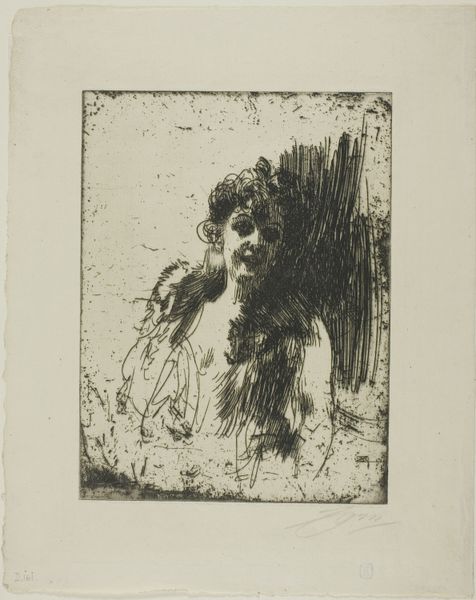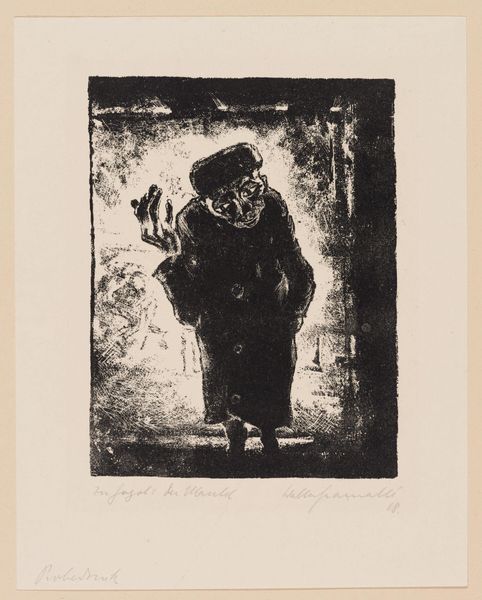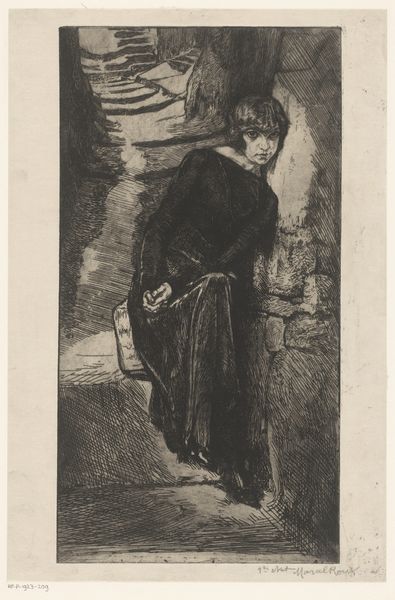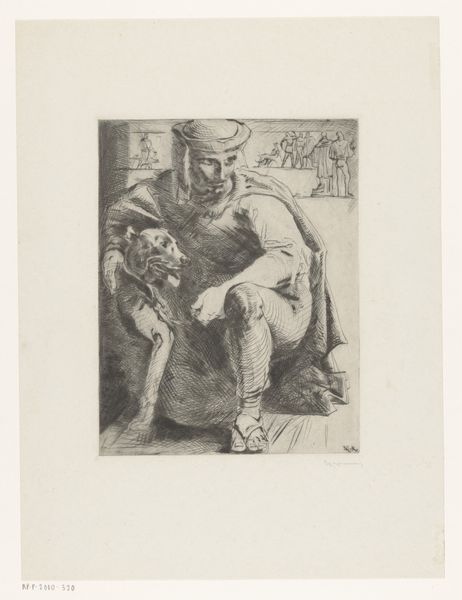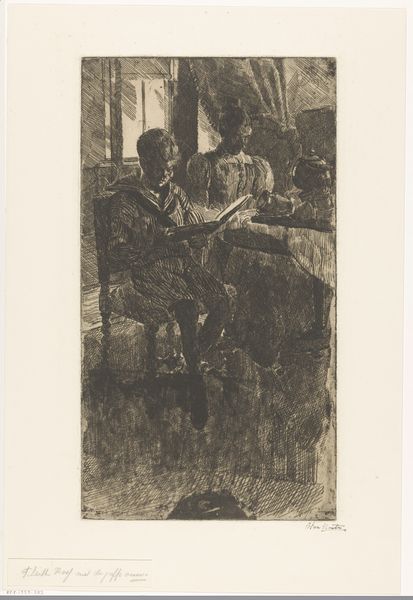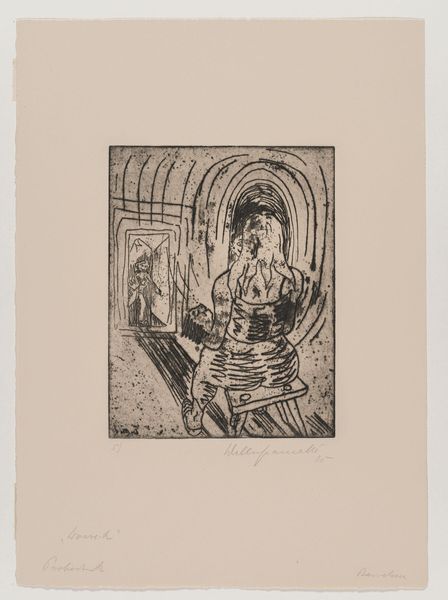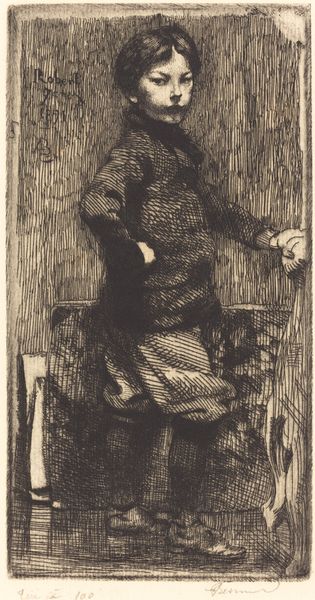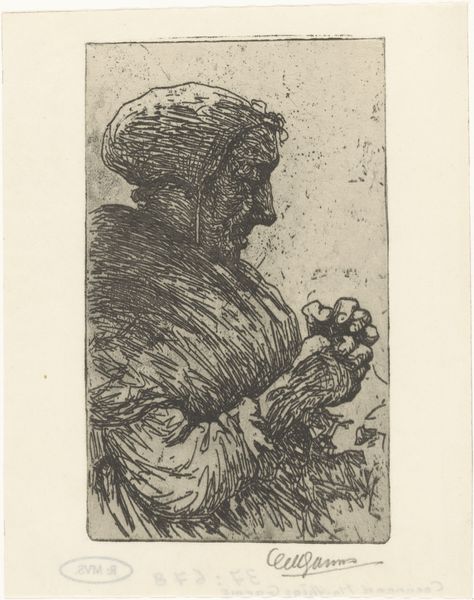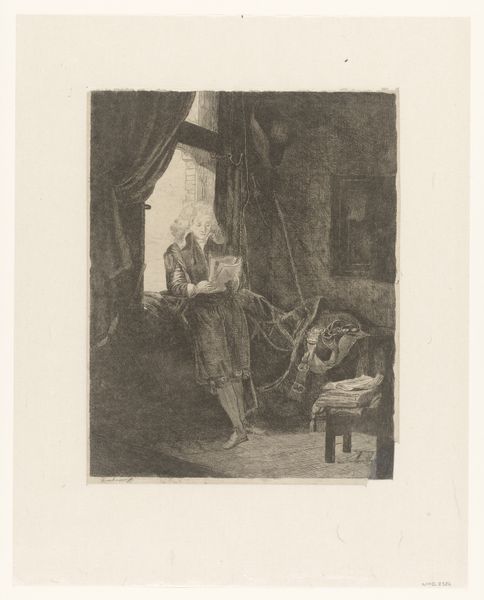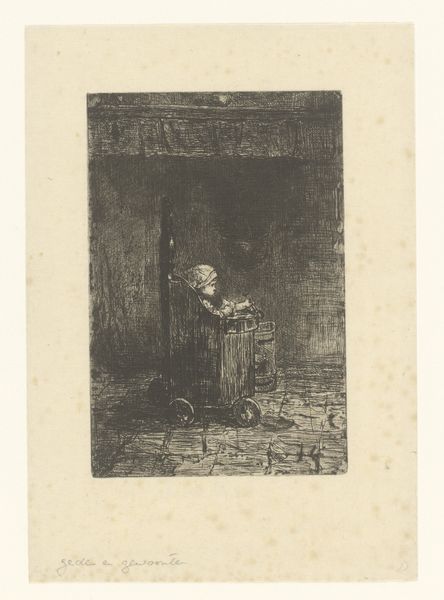
drawing, print, etching, paper
#
portrait
#
drawing
# print
#
impressionism
#
etching
#
paper
#
pencil drawing
#
united-states
#
genre-painting
#
realism
Dimensions: 154 × 94 mm (image); 170 × 115 mm (plate); 234 × 160 mm (sheet)
Copyright: Public Domain
Curator: This etching, “Keying Up,” was created around 1885 by the American artist William Merritt Chase, and we have here at the Art Institute of Chicago. Editor: There’s a theatrical, almost manic energy to the figure. The raking lines create an unsettling chiaroscuro that really grabs your attention. Curator: Chase, primarily known as a painter, was quite prolific in printmaking as well. His exploration of etching reveals a real engagement with the medium's potential for detail and texture. You can observe the crosshatching used to create depth and shadow, effectively mimicking the qualities of a tonalist painting. Editor: Definitely. And notice the subject. It seems like some sort of performer getting ready – adjusting his ruff, the whole costume suggests a staged performance, maybe even a specific role or character from the theater of that time. What does it suggest about the art world when an artist turns his gaze to theatre workers or performers? Curator: Indeed, and it speaks to a rising interest in capturing everyday scenes and people within the art world. This etching offers insights into Chase’s interest in portraying people within the framework of entertainment and display. He's blurring lines. This wasn’t just high-minded art; this was art about the labor, the physical work, the production of artifice itself. Etchings themselves were becoming increasingly available to the masses, contributing to a broader visual culture. Editor: And how do we, as viewers today, contend with that display? Who do we think this man is and for what purposes? Chase is certainly playing into contemporary narratives in which an entire society puts itself on display. I do admire that he chose to explore this through printmaking. It really democratized art. Curator: The medium itself enabled the artist to question boundaries between artistic work, social portrayal, and its own status within the culture. Editor: Absolutely. Reflecting on the print's context allows for such consideration regarding the dynamics between entertainment, representation, and its own existence as a medium in its time. Curator: It certainly provides rich avenues for critical examination.
Comments
No comments
Be the first to comment and join the conversation on the ultimate creative platform.
